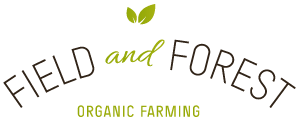Developing growing technologies for endangered plants

Wild sea holly, coastline of the Baltic Sea. Sample gathering campaigns during summer 2020. Image: Institute for Environmental Solutions.

Common yew (Taxus baccata L.) plant with aril, sampling campaigns during
the summer 2020. Image: Institute for Environmental Solutions.

With micro-propagation method multiplied Siberian ginseng plant. Image: Institute for Environmental Solutions.
While populations of many wild endangered species are decreasing, the demand for medicinal and aromatic plants (MAPs) in pharmaceutical, cosmetology, and food industry increases. Therefore, IES researchers develop efficient and economically viable plant propagation methods for commercial use in organic farming. This solution will reduce pressure on wild populations, as well as ensure a sufficient amount of high-quality plant-based materials for different industries. Three endangered wild medicinal plant species with high market potential were selected for this research – Siberian ginseng (Eleutherococcus senticosus Maxim.), common yew (Taxus baccata L.) and sea holly (Eryngium maritimum L.).
Propagation with plant tissue cultures is a biotechnology method that helps to grow plantlets in laboratory test tubes. The first step of this method is seed germination till a plantlet emerges. IES’s leading researcher Dr. Ieva Mežaka describes this process: “we have launched seed sprouting experiments in which we test different types of seed treatment. For seeds to sprout, we must simulate conditions they normally experience in nature, for example, cold weather during the winter season. We carry out these tests in climate cameras where controlled temperatures can be set. To assess the most suitable conditions for accelerated seed sprouting we test different combinations of temperature, light intensity, humidity. For this activity we use not only sprouted seed plantlets but other plant parts as well. For example, in this research we use buds of Siberian ginseng.”
The next step is micro-propagation. This method that is carried out in laboratory conditions allows to multiply plants by cutting them into pieces and growing new ones. IES researchers have already started this process. Dr. Ieva Mežaka describes the micro-propagation process: “From germinated seeds we can grow plantlets. We take that plantlet that we grew and cut it into pieces. From them we can grow out new plantlets and continue this process in geometrical progression.”
The development of this method also includes propagation efficiency tests, which helps to understand how many new plantlets can be obtained from mother plant. Additionally, researchers assess different compositions of nutrients that are provided to plants grown in test tubes. This is an important process, because it determines the growing conditions of plant, rooting and plantlet development.
During the next research periods, IES scientists will continue to
develop seed sprouting and micro-propagation methods. The following step
will be the adaptation of plants grown in laboratory conditions to
growing conditions in soil. “Plants
that are propagated in test tubes have not developed a protective outer
layer. Therefore, they are vulnerable towards external risks, such as
drought. Ideal initial environmental conditions for plants that are
grown in the laboratory are, for example 100% humidity level. To reduce
the shock for the laboratory grown plants, during adaptation process, we
will gradually reduce the humidity level in the room, thus allowing the
plants to adjust to natural field conditions,” explains Dr Ieva Mežaka.
The research on plant tissue culture application for commercial
propagation of endangered medicinal plants is developed as a part of the
European Regional Development Fund programme 1.1.1 "Improve research
and innovation capacity and the ability of Latvian research institutions
to attract external funding, by investing in human capital and
infrastructure" 1.1.1.1. measure “Support for applied research”, No.
1.1.1.1/19/A/083.
More about the project here.
